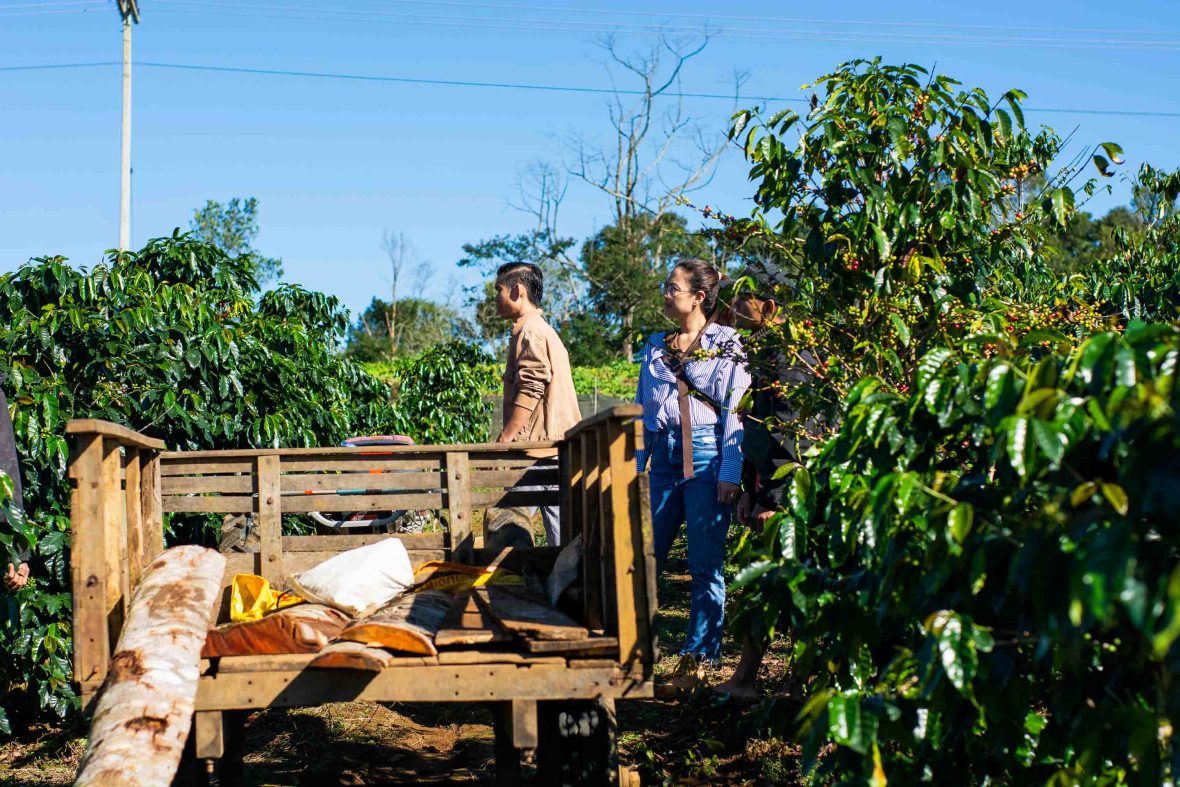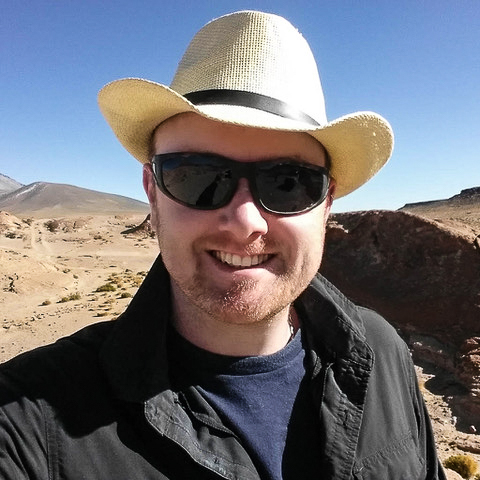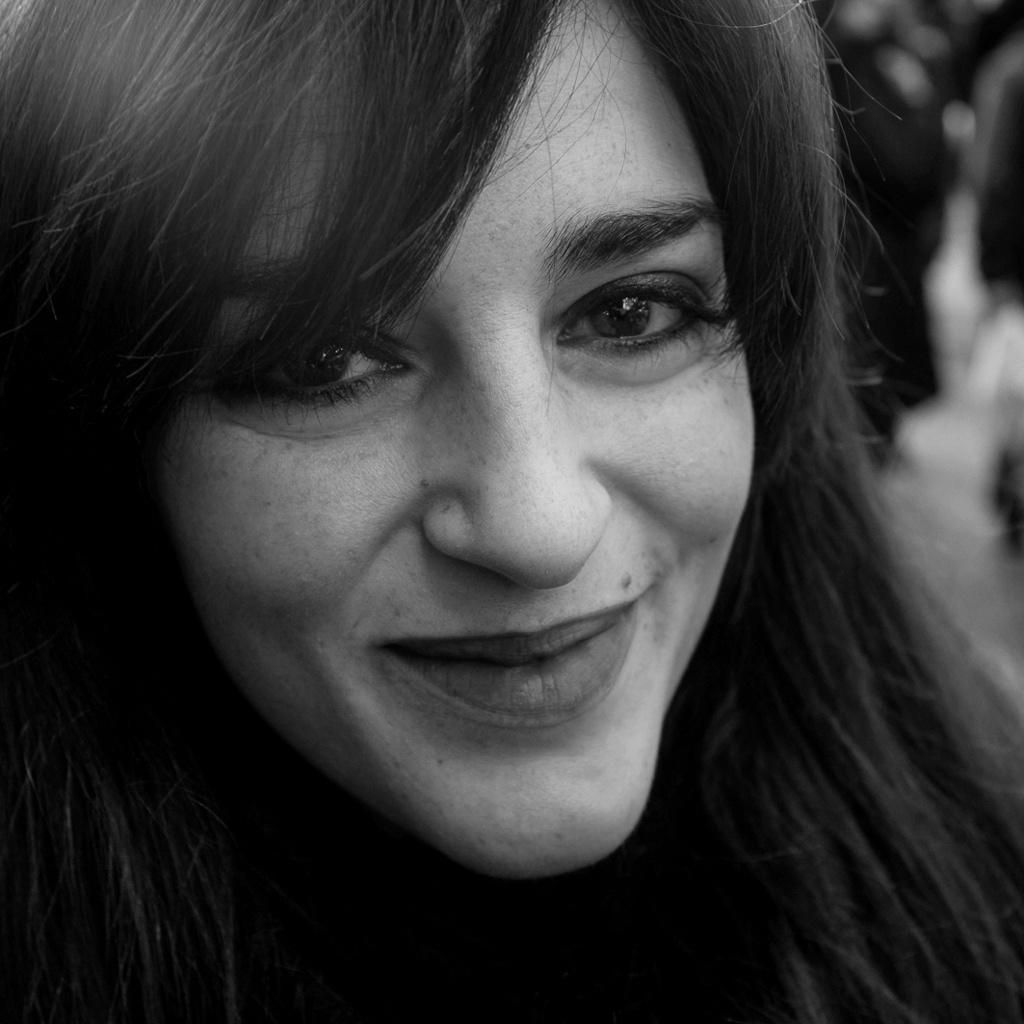
In the underrated capital of Laos, travel journalist Claire Boobbyer visits the cafés behind the coffee revolution and the town’s little-known sites.

In the underrated capital of Laos, travel journalist Claire Boobbyer visits the cafés behind the coffee revolution and the town’s little-known sites.
Lao coffee, you ask. Yep, it’s still under the radar internationally but local baristas and Lao beans are winning awards. Vientiane, once Vieng Chan—City of Sandalwood—is now perfumed with the aroma of coffee.
Many travelers skip the Lao capital on the middle Mekong on their way through this Southeast Asian nation. But with its statue-bedecked temples, enormous bronze Buddhas, street food, and a booming interest in coffee, now’s the time to linger… and ‘caffeinate’.

I’m drinking an espresso from Le Trio, a tiny pavement café with parasols in the heart of downtown. The smell of roasting coffee filters into the rush hour. Mine is made from a blend of honey arabica roasted from the Bolaven Plateau in the south of Laos and Catimor from Xieng Khouang up north. With a strong hint of almond, it knocks me onto my feet.
Fuelled up, I head down main drag Rue Setthathilath, named after a king who did the most to bring Buddhism to Laos. Mahogany trees shade herringbone brick pavements and their languid branches lean over the traffic—all brightly painted tuk tuks, motorbikes and cars. Monks in marmalade-colored robes clutch cellphones and steer past pavement billboards and clunky pylons tangled in telephone wires challenging the density of a zillion fungal filaments of mycelium.
I pop into a wat. Beneath high-rises going up are a trio of wats, or Lao temple complexes. I find dazzling colors, stupas concealing ashes of the dead, and cartoonish animal statues. Like the life-sized sheep at Wat Mixay. Nearest sheep? Mongolian gifted at a military farm, several hundred kilometers away.
At next-door Wat Ong Teu, two life-size white elephant statues guard the entrance. I gawp at a 10-tonne gleaming bronze Buddha image, the largest in Vientiane inside the ordination hall. At Wat Inpeng I chat to monks keen to practice their English. Are they allowed to drink coffee, I ask. “Um…not really,” they say.
At Dam Dam (Black Black), a revamp of a 1958 shophouse, I find my next caffeine hit. Dam Dam hosts coffee workshops and resident DJs every Saturday. French-Lao owner David Viron is grinding coffee, boiling water, and weighing grounds. He sells single origin coffee only.
I sit on a stool with a skateboard seat while David makes a robusta coffee produced by Lak 40, a farm in the Bolaven. Robusta doesn’t get the attention that arabica beans do but there’s talk of a renaissance among coffee connoisseurs.
“I brewed robusta from southern Laos,” David tells me. “It tasted like salted caramel biscuit. It was so good, I changed my mind on it. When you drink arabica, you expect something floral and fruity. With robusta, if you keep in mind it should taste like a chocolate cake in a beverage, then that’s a pleasure.”
Next to Dam Dam is Wat Chan. Trumpeting elephant statues garlanded in marigold necklaces ring its boundary. In Laos, elephants are sacred animals. But also in Laos, both elephants and locals have been blown up and injured by landmines.
I learn more at the nearby Mines Advisory Group Unexploded Ordnance information center. This British-founded group has spent 19 years removing some of the 80 million cluster bombs that failed to explode on impact after the US dumped two million tonnes of ordnance over Laos between 1964 and 1973 during the Vietnam War.
The visit is, as you’d expect, a sobering experience. But from brutality, new shoots have emerged. Xieng Khouang province is the most bombed parcel of land on earth but here, newly prize-winning arabica coffee is harvested.
It’s food for thought. My stomach is rumbling too, so I tuk tuk it to Mini Makphet for box-fresh spring rolls stuffed with carrots, herb, noodles and a dipping sauce. Makphet is a vocational training restaurant for disadvantaged Lao youth, many of whom once lived on the streets. In 17 years, almost 600 students have been trained in hospitality.
It’s time for something sweet. At Sugamelt, Andy Intharaphitak, who roasts Lao coffee, has come up with a cunning plan. He sells coffee along with brioche doughnuts drizzled in different flavors. Of course, I choose the soft, doughy circle covered with espresso-infused glazing and dusted with a few grinds, along with a light yellow Caturra coffee from Salavan in the Bolaven. It’s refreshing, fruity and for me has a hint of cacao.
“I focus on Lao coffee with a light roasting profile to bring out acidity, sweetness and other nuances otherwise masked by traditional roasting and brewing,” Andy says.

Taking a side road, I spy That Dam, a giant black stupa with a dressing of grass that commands its own mini roundabout. It was once covered in gold until the Siamese ransacked Vientiane in 1828 reducing the city to ash. Wat Sisaket, close by, was untouched by marauders. It’s exquisite: 10,000 Buddhas in golden teak and bronze sit behind stencilled stucco pillars.
When French colonialists turned up in their ‘dead-end posting’ of Vientiane, Wat Sisaket was the only temple unvandalized. The tiny French corps went out of their minds on opium before a ban. Then they set about resurrecting Vientiane.
Some went south too, and planted coffee beans on the Bolaven, a lava plateau riven with thundering waterfalls and covered in plantations of coffee, strawberries and tea. Today, the Coffee Producers Cooperative helps almost 2,000 families on the Bolaven, in one of the poorest parts of the country.
The People’s Democratic Republic of Laos, ‘PDR’ also translates as ‘Please Don’t Rush’. I try not to as I head back to my hotel, Lao Poet, to don evening gear.
A tuk tuk takes me up the frangipani-lined Lan Xang (Land of a Million Elephants) Avenue passing Laos’ Arc de Triomphe-style Victory Monument, Patuxai. Beyond is the gleaming gold-tipped stupa Pha That Luang, the national symbol of Laos that’s said to house a relic of the Buddha.
My nose leads me to a nearby night market with food sizzling and smoking. I tuck in to pork jerky caked in sesame seeds—delicious; fried rice lollipop with chilli—moreish; stir-fried silkworm with carrot—intriguing; khao nom kok, mini coconut pancakes—divine; and steamed pig brain, swerve.
I climb the unassuming stairs to Gallery 38 and open a door into a different world: A bar with an unexpected clubby vibe. On the menu, I see an Espresso popcorn cocktail.
I want it, of course, but they’re out of ingredients, so I ask for the beautiful pink Valentine Rose. Pumped with caffeine, I’m tempted to bar-hop—but I don’t as I’m up early to catch a flight.
I can’t get enough of the delicious noodle soup with crispy pork at Namphou Coffee restaurant, but I make a quick exit for my final caffeine fix at Abile. Abile is a temple to coffee with presses lined up like works of art right by Wattay Airport.
It’s run by award-winning barista Bibee Mounlamay, a certified arabica and robusta grader who serves Lao robusta coffee from her family’s Bolaven farm and microlot anaerobic robusta from a specialty farmer; the latter won first place in a national coffee competition this year.
Bibee is passionate about Lao coffee: “It’s one of our top exported products,” she says, “and promoting it will improve quality, value and skills and lead to better incomes across the coffee supply chains here.”
I’m doing my bit too. I’ve packed two bags of Lao coffee beans and snuck in a bottle of national Lao Di rum infused with coffee… to make up for last night’s missed cocktail.
**
The writer traveled courtesy of InsideAsia, who can tailor any trip to Laos including Vientiane, on their 10-night Laos by Rail trip.
***








Can't find what you're looking for? Try using these tags: